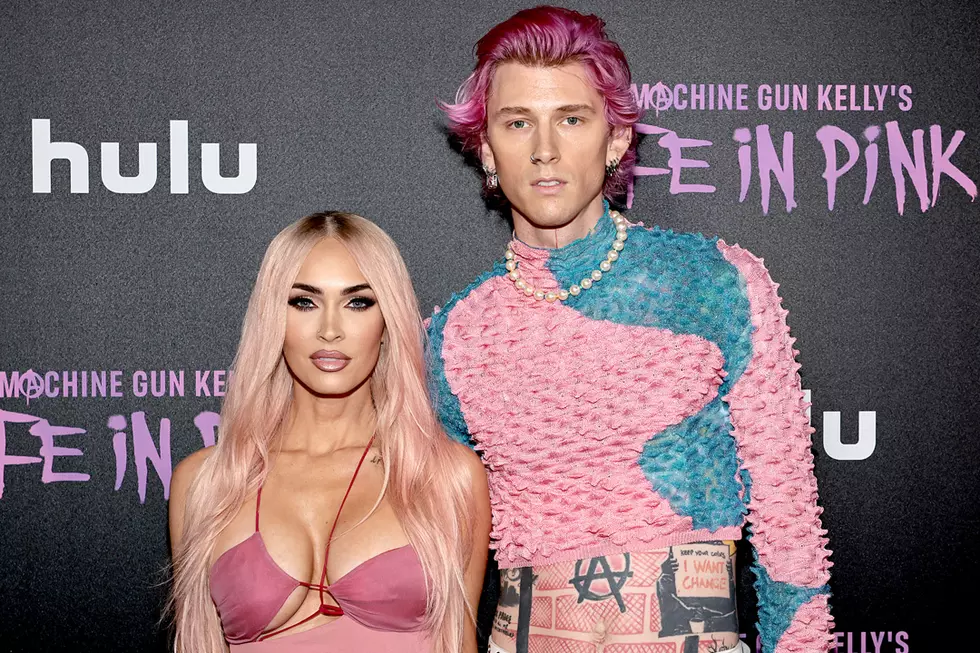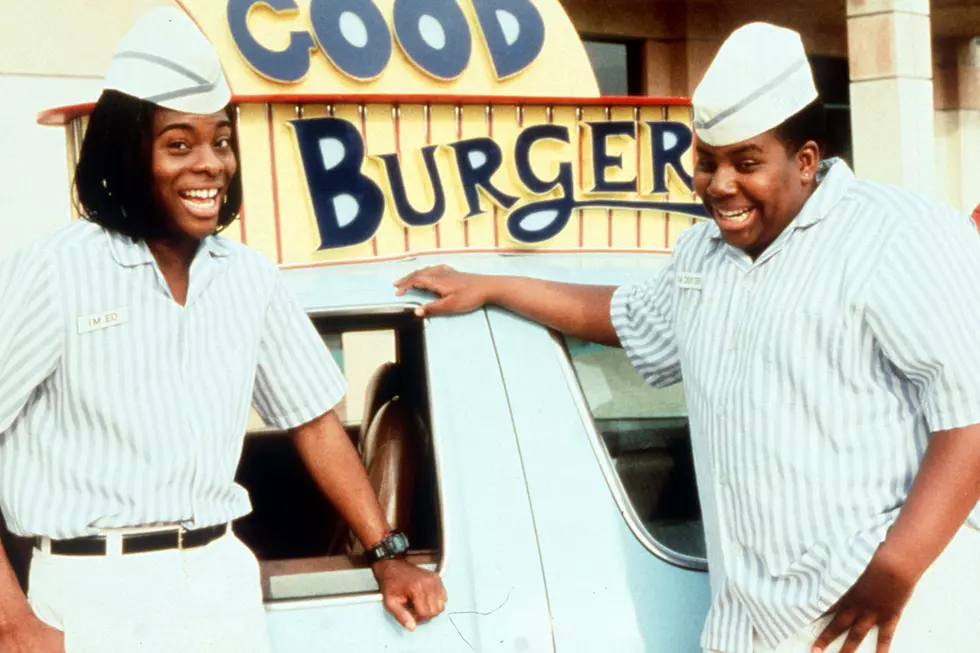![New ‘Teenage Mutant Ninja Turtles’ Does The Impossible: Makes Other TMNT Movies Look Good [Review]](http://townsquare.media/site/622/files/2014/08/10497899_253965451393892_4015109755060702615_o-630x236.jpg?w=980&q=75)
New ‘Teenage Mutant Ninja Turtles’ Does The Impossible: Makes Other TMNT Movies Look Good [Review]
It takes almost toxic levels of suspension of disbelief to make it through the new Teenage Mutant Ninja Turtles reboot, the fifth and worst entry in the film franchise based on the pop culture phenomenon originally created by Kevin Eastman and Peter Laird. That suspension of disbelief has nothing to do with mutant turtles in the sewers who learned kung fu from a mutant rat to fight a villain wearing a suit of knives. No, the TMNT are as ingrained in our imagination as any other 20th century commercial institution at this point, and if we're seeing the film at all, they've already got us in the theater—we've bought the premise like we've bought our ticket. Rather, this new TMNT suffers from the other, worse kind of suspension of disbelief: Filmgoers are asked to turn off their brain, ignore all logic and just accept the fact that every action taken by every character makes no sense at all.
WARNING: The following contains major spoilers.
The film stars Megan Fox as April O'Neil, a Channel 6 news reporter as she was in the classic 1980s TMNT cartoon series. She longs to do serious, investigative reporting instead of vapid, TV-ready fluff. She constantly complains about this to her smarmy cameraman Will Arnett, the Arrested Development star ostensibly meant to serve as comic relief, but whose screen time is spent ogling or otherwise hitting on the much younger April, which gets really creepy really fast (but it's not quite as creepy as Michaelangelo joking about his mutant turtle boner). But April finds the break she was looking for when she learns someone is fighting back against the criminal organization known as the Foot Clan, and meets the mysterious warriors on a rooftop.
These are, of course, our title characters, radically redesigned for the 21st century. Longtime TMNT fans will notice that Bay's heroes bear a passing resemblance to artist Michael Zulli's very idiosyncratic version of the characters seen in three issues of the original, black-and-white comics series form 1990 and 1991. In addition to being differentiated by the color of their masks, their weapons and their voices, the designers and animators make the turtles different sizes and cover them with accessors, some of them weird and seemingly random (like Donatello's tortoise shell glasses -- was there a fifth brother who didn't make it?). They even give the heroes different colored eyes and scars. The most drastic change to the classic vision of the Ninja Turtles is that they are now gigantic, particularly Raphael an Leonardo, not to mention the fact that they're super-strong and bulletproof.
Following her encounter with the turtles, April has an epiphany. She'd met four mutant turtles wearing yellow, red, blue and purple, and calling themselves Raphael, Leonardo, Donatello and Michelangelo. When she was a little girl, she used to play in the lab of her late father and his colleague Eric Sacks (played by William Fichtner), who painted dabs of yellow, red, blue and purple the shells of four turtles called Raphael, Leonardo, Donatello and Michelangelo, and injected them with something called "mutagen."
Could these two events be related, somehow?
Spoiler alert: Yes.
It turns out that Sacks was the secret padawan of Sith Lord Shredder (played, when not a CGI effect, by a barely on-screen Tohoru Masamune), and they had a secret plan to develop a poison gas, blanket the city with it, and then sell the cure to the government. It had to be abandoned when a lab fire set by April's dad destroyed all their research for that cure. Sadly, the brilliant scientist apparently accidentally killed himself in the same fire. Presumably he poured gasoline all over the lab starting at the exit and worked his way into a corner before realizing his mistake? Then, young April rushed in and saved Splinter and the turtles, but apparently didn't bother with her burning father.
Anyway, April tries to convince her boss Whoopi Goldberg that there's a group of ninja turtle vigilantes protecting New York City from the criminal organization known as the Foot Clan. She does so by staying up all night to assemble a serial killer's wall of photographs, pins and yarn of various sightings and graffiti, charting a dozen examples of turtle man appearances. One could just as easily assemble a complex chart of the film's many instances of in-story idiocy on the part of the characters, starting with the fact that O'Neil's presentation to her boss—who fires proceeds to immediately fire her for being a crazy person—did not include the photograph she took of the turtle men, which she shows to someone else in the very next scene.
Upon discovering that one of the side-effects of the experiment was the creation of invincible super-turtle men, Sacks naturally decides to have the Shredder capture the turtles, drain their blood for the cure, and then resume Operation: Poison The City (via clouds of colorful smoke that emanate from the tower with his name on it) and then sell the cure. A short-sighted villain, Sacks doesn't see any value in the ability to create mutant super-soldiers.
To save the day, the ninja turtles must have a series of all-CGI battles with the Shredder, so covered with knives and blades that he looks like a particularly shiny left-over from Bay's Tranformers franchise. He's also gained the ability to shoot serrated blades from his armor, which boomerang back to him via magnets. It all culminates in a daylight battle above Times Square, in which the Shredder is killed by April kicking a blade into his face, and the Turtles all ride a plummeting, poison gas-bearing spire to the crowded streets -- which, if it touches the ground, is meant to kill a bunch of people, but just doesn't because...well, just because.
In the denouement, Arnett and Michaelangelo both take one last opportunity to try to come on to April before the turtles roll up in the 2014 Party Wagon and thank her for keeping their story secret—naturally, no one noticed the falling building, the giant turtle men or the shiny robot samurai guy who made a Looney Tunes-style crater in the pavement the other day.
As with the comic book-inspired movie that opened the previous weekend, this one has a short, extra gag-scene inserted into the end credits. It's perfectly apropos of the rest of the film: Michaelangelo and Raphael are running across the daylight skyline and, when someone looks their way, they hide themselves by jumping on to a Victoria's Secret billboard, using their shells to make the model's breasts look 3-D.
Maybe it has something to do with the fact that this TMNT's three different screenwriters were all on different pages, and none of them were on the same page as director Jonathan Liebesman (Wrath of the Titans, Battle: Los Angeles) or producer Michael Bay, who has been receiving much of the blame for the film's shortcomings from fans and critics. The film does seem to have as many tones as writers. Rather than a straightforward children's movie, like the first trilogy of films, or an attempt at a family-friendly, all-ages piece like the several popular animated series, 2014's Teenage Mutnat Ninja Turtles lurches violently and suddenly from self-serious comic book movie storytelling (complete with dramatic, portentous score), to kid-friendly cartoon antics to offensive sex gags -- most of which are made at the expense of Fox, the nadir being the moment when the sight of her butt in tight jeans during an action sequence is so distracting that it nearly kills half the cast.
Cowabunga, I guess.
More From Star 93.9










